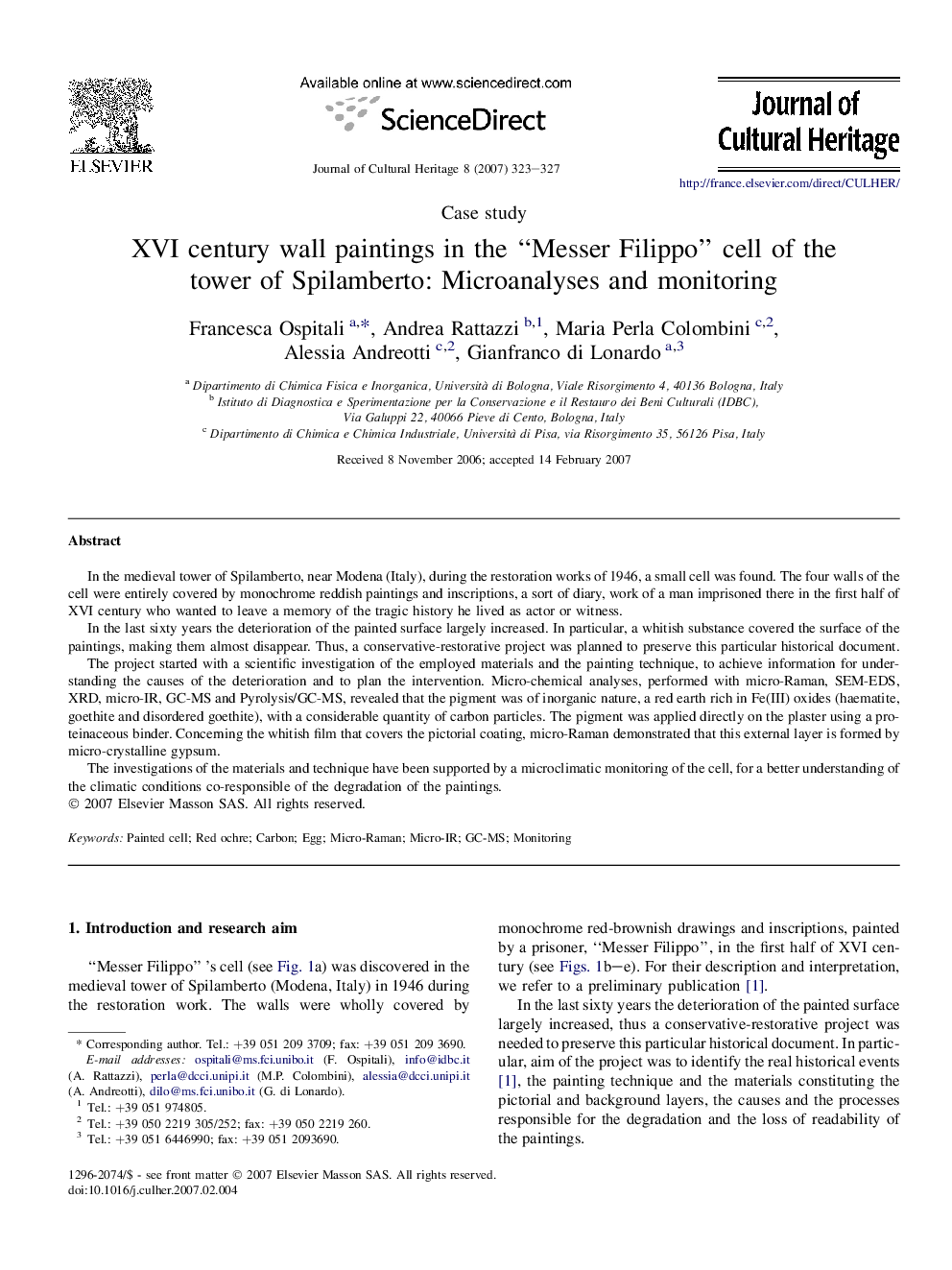| Article ID | Journal | Published Year | Pages | File Type |
|---|---|---|---|---|
| 1038725 | Journal of Cultural Heritage | 2007 | 5 Pages |
In the medieval tower of Spilamberto, near Modena (Italy), during the restoration works of 1946, a small cell was found. The four walls of the cell were entirely covered by monochrome reddish paintings and inscriptions, a sort of diary, work of a man imprisoned there in the first half of XVI century who wanted to leave a memory of the tragic history he lived as actor or witness.In the last sixty years the deterioration of the painted surface largely increased. In particular, a whitish substance covered the surface of the paintings, making them almost disappear. Thus, a conservative-restorative project was planned to preserve this particular historical document.The project started with a scientific investigation of the employed materials and the painting technique, to achieve information for understanding the causes of the deterioration and to plan the intervention. Micro-chemical analyses, performed with micro-Raman, SEM-EDS, XRD, micro-IR, GC-MS and Pyrolysis/GC-MS, revealed that the pigment was of inorganic nature, a red earth rich in Fe(III) oxides (haematite, goethite and disordered goethite), with a considerable quantity of carbon particles. The pigment was applied directly on the plaster using a proteinaceous binder. Concerning the whitish film that covers the pictorial coating, micro-Raman demonstrated that this external layer is formed by micro-crystalline gypsum.The investigations of the materials and technique have been supported by a microclimatic monitoring of the cell, for a better understanding of the climatic conditions co-responsible of the degradation of the paintings.
